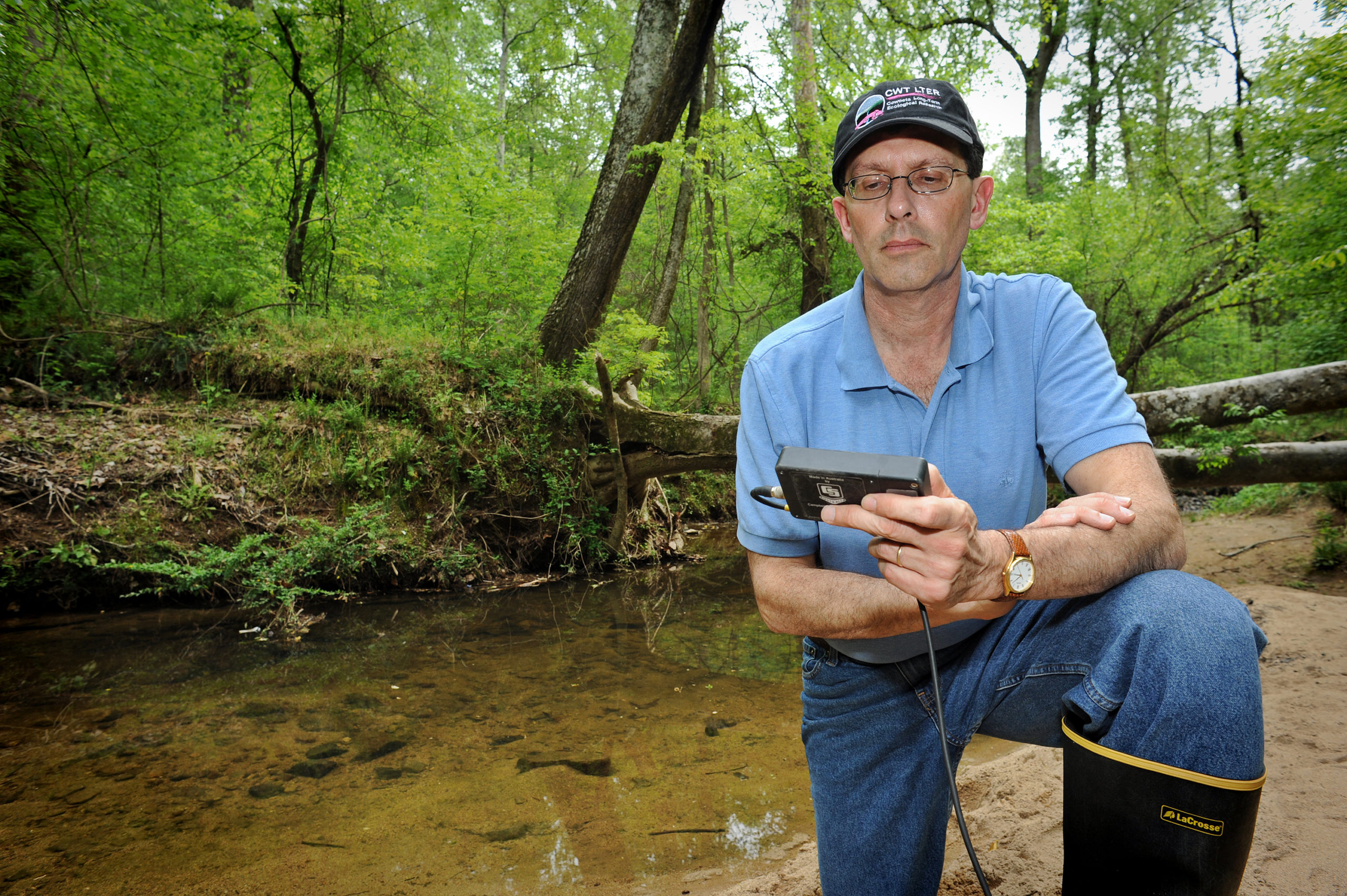
As UNC kicks off a new, two-year academic theme around water, we asked Larry Band to break down the top five water worries for North Carolina and the world. Band is director of UNC’s Institute for the Environment and the Voit Gilmore Distinguished Professor of Geography.
1. Drought
North Carolina has seen two historically unprecedented droughts during the past decade — one in 2002 and another in 2007 to 2008. Add to that our rapidly growing population, and we’ve got trouble.
“We’re pretty sure that our population is going to double over the next few decades,” Band says. “These last two droughts were wake-up calls.”
Drought combined with depleted rivers and groundwater can devastate local food supplies, especially in certain parts of the world. Northern China and northern India, for example, are quickly exhausting their groundwater resources.
We’ve had to begin asking ourselves some tough questions. Do we have enough water to get through the hard times? And can our infrastructure and water policies handle a population explosion?
2. Flooding
Inland flooding and storm surge have caused millions of dollars in damage to homes, farms and livestock in eastern North Carolina. Landslides and flash flooding in the western part of the state can be just as destructive. Our cities are particularly vulnerable to flash floods, Band says — impervious surfaces in urban areas keep heavy rainfall from draining properly.
So how do we deal with excess water? And how do we manage population growth so that residents aren’t living in active floodplains?
UNC researchers are working on ways to predict flooding and storm surge so that locals can be warned long before rising waters stream into their living rooms. Scientists are also looking at the health and environmental effects in surrounding communities when, say, a large hog farm is flooded, and waste and chemicals from barns and containment lagoons are unleashed into the local water supply.
3. Power Shortages
Energy companies need plenty of water to keep their thermoelectric generators running at safe temperatures. On the hottest summer days, when air conditioners are running on high, companies usually use hydroelectric power from dams to keep up with the increased power demand.
But during North Carolina’s last two droughts, energy companies had to limit the amount of power they produced. The reservoirs were too low.
“The companies had to import or buy electricity on the market from elsewhere,” Band says. And it wasn’t cheap. The market price of electricity always goes up during a drought.
4. Toxic Drinking Water
In recent years, North Carolina has seen several troubling cases of polluted well water, including high levels of nitrogen, pesticides and even naturally occurring arsenic.
“Typically, well water is tested once, when you construct the well,” Band says. “Then you don’t notice any pollutants coming out until people start showing up at the doctor.”
The Centers for Disease Control and UNC researchers are now working to find out whether certain contaminants are, as some data indicate, linked to birth defects such as gastroschisis.
Internationally, many countries don’t have the capacity to maintain clean water. Dehydration from diarrheal diseases is one of the top killers in the world.
5. Fish Kills
Lakes, rivers and wetlands need sufficient water quantity, but also high water quality, which has everything to do with the nutrients and contaminants in a body of water.
Too much nitrogen and phosphorous, for example, can cause harmful algae blooms. As the algae die, the oxygen levels in the water plummet, resulting in anoxia. Tens of thousands of fish can go belly-up all at once. Fish kills like this have plagued North Carolina’s waters over the years.
Many bodies of water in the state, including the Neuse River, Jordan Lake and Falls Lake, are now classified as “nutrient-sensitive water,” meaning that local authorities have some detective work to do. They’ll have to identify not only which contaminants are present, but where exactly they’re coming from (a local farm? some nearby city?) and how to lower them to safe levels.
Restoration plans like this can be expensive and difficult to implement, Band says. But we won’t be able to maintain healthy water supplies without them.
Read a package of stories about water initiatives at Carolina.
[By Margarite Nathe. Nathe was a writer at Endeavors magazine. This story is featured in the fall 2012 Carolina Arts & Sciences magazine. ]




